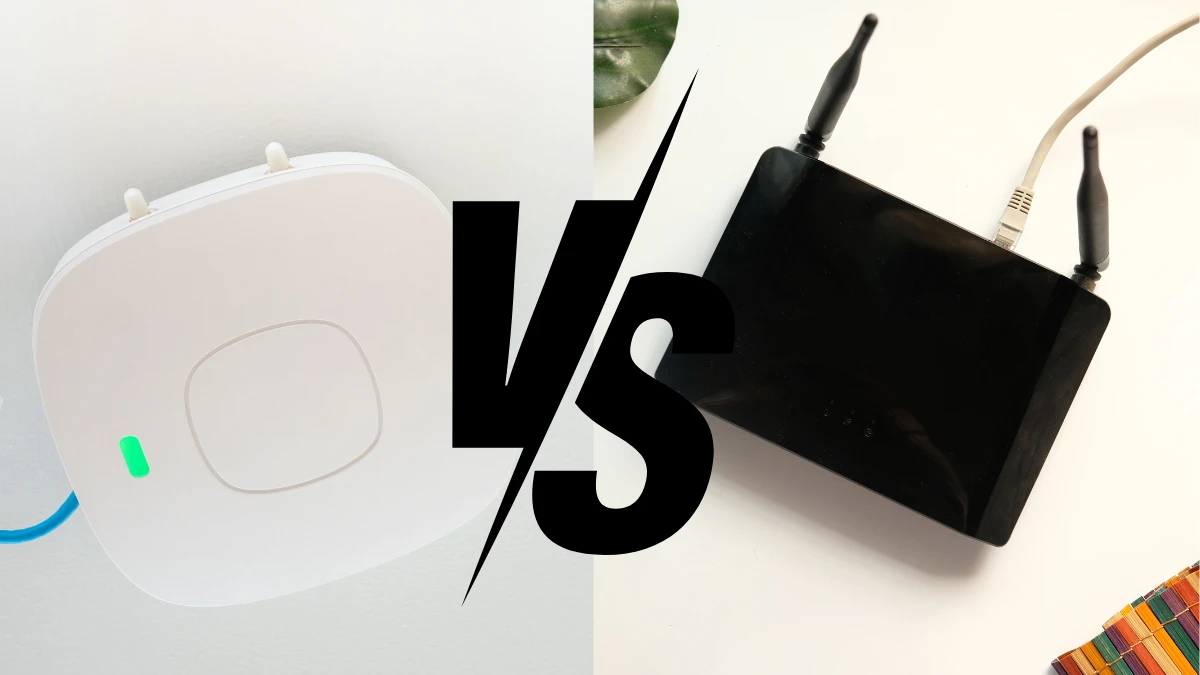Access points and routers are devices that are often used in the world of internet networks. Access point vs router have different functions but are similar in their role of providing a stable and wide WiFi connection.
Understanding the differences in access point vs router is very important so that you can determine which device is most suitable for your home or office network.
This article will discuss the differences in access point vs router, so you can choose the right device for your network needs.
Also Read
Table of Contents
What is an Access Point?

An access point is a device that allows various devices such as laptops, smartphones, and tablets to connect to the internet network wirelessly (via WiFi).
This tool acts as a liaison between wired networks and wireless devices so that the internet connection can reach a wider area and remain stable.
Technically, the access point transmits WiFi signals with the help of antennas and transceivers.
Generally, these devices are connected to a router, switch, or hub using an Ethernet cable to expand network coverage.
What is a Router?

A router is a network device that plays a role in connecting two or more different networks, for example connecting a local network (LAN) to the internet or connecting between different network segments.
The Differences Between Access Point vs Router

To better understand the difference between a router and an access point, let’s review seven key aspects that differentiate the two.
1. Function
- Access Point: In contrast, an access point functions as a wireless point that connects devices to an existing wired network. Access point do not manage data traffic independently but rather extend the coverage of an existing network.
- Router: Routers act as a link between various networks and are tasked with managing data flow and directing information to the right destination. As the regulator of the data path, the router becomes the main communication center in the network.
2. Features
- Access Point: Access points have simpler features that focus on wireless connectivity, such as signal strength, single or multiple access modes, and wireless network security settings such as WPA/WPA2.
- Routers: Routers are generally equipped with more comprehensive features, such as DHCP Server, Firewall, VPN, and Network Address Translation (NAT), which allow for better network management and protection.
3. How it works
- Access Point: Access points receive data signals from routers and convert them into wireless signals. When a device wants to connect, the access point will verify the credentials and grant access to the network if the information entered is correct.
- Router: Routers use route tables to determine the best path to direct data to its destination. When data comes in, the router checks the destination address of the packet and chooses the best path to send the information. Routers also handle various communication protocols to manage data traffic.
4. Utilization
- Access Point: Access points are used to extend the range of an existing wireless network. Access point are often installed in places with large areas or many obstacles that can interfere with the signal, such as high-rise buildings or shopping malls.
- Router: Routers usually function as network centers and are suitable for use in various locations, such as homes, offices, and educational institutions. They are ideal for building new networks or connecting multiple networks.
5. Configuration
- Access Point: Access point configuration is simpler, allowing users to easily set basic settings such as network name (SSID), password, and security settings.
- Router: Routers usually have a more complex user interface, and technical settings such as network, IP, and security settings require technical knowledge.
6. Security
- Access Point: Although access points also have security features, they are more limited than routers. Access point generally use WPA2 encryption to protect WiFi signals and prevent unauthorized access.
- Routers: Routers are equipped with a variety of advanced security features, including firewalls and encryption, that protect the network from external threats and unauthorized access.
7. Connection
- Access Point: The access point must connect to the router via an Ethernet cable to function, and then emit a wireless signal to connect other devices to the network.
- Router: Routers can connect to the internet via Ethernet cable, DSL, or other wired connections, and can connect devices on the LAN using cables or wireless signals.
Those are the 7 differences between access point vs router for your consideration to determine which is more appropriate to improve network quality at home or office according to your needs.
If you want to expand your WiFi network without reducing speed, use an access point. If you need the main device to connect the network to the internet and manage data traffic, choose a router.












